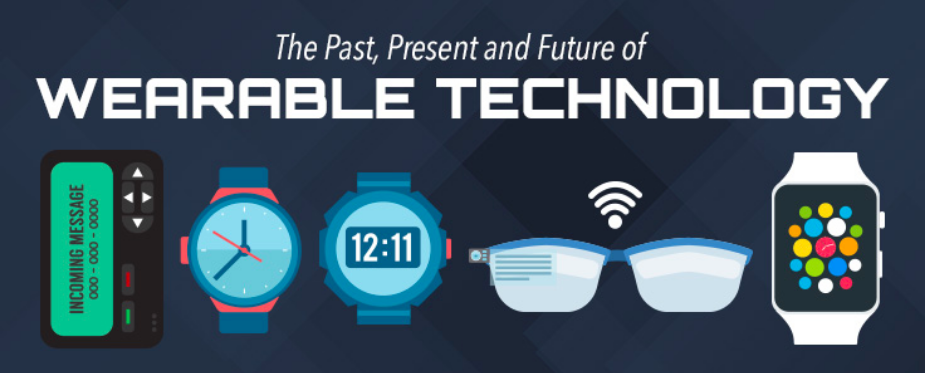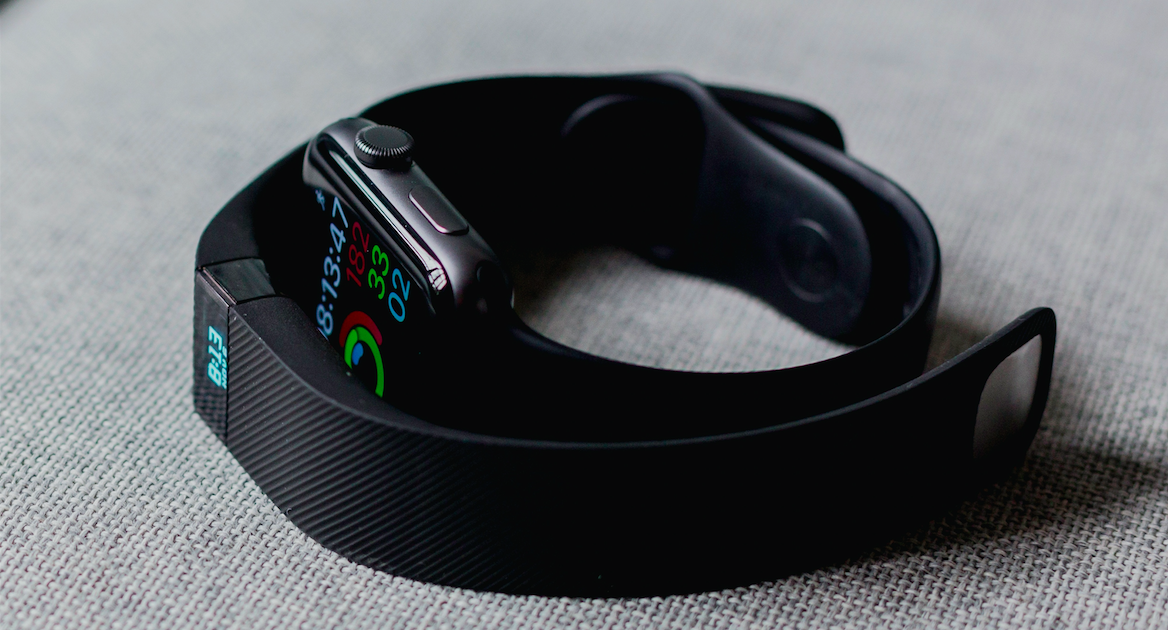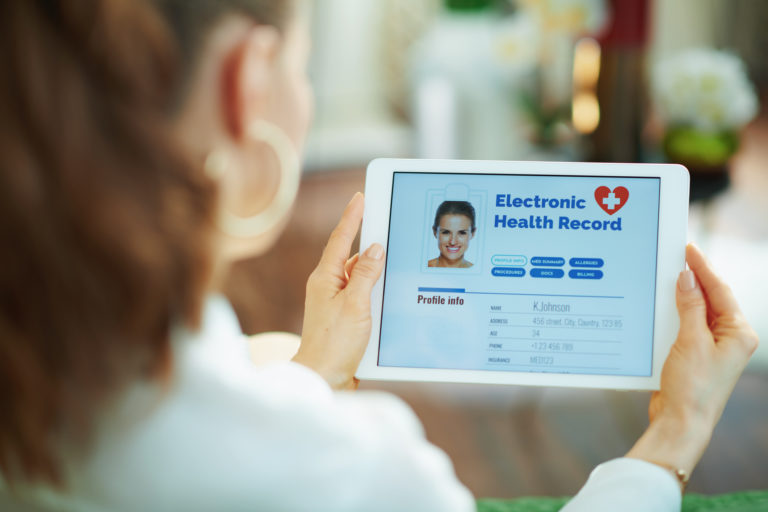The Rise of Wearable Health Technology
Does it seem like everyone is staring at his or her wrist more and more often?
The unmistakable buzz while you’re in a meeting. The ping you hear from the mat next to you in your yoga class (especially when the sign clearly states: “NO CELL PHONES ALLOWED!”). Or the occasional person who is robotically speaking into their arm as if he or she could be an FBI informant or international spy.
Yes, it may all seem a little weird, or even just a tad too connected. But wearable technology is here to stay.
There are Apple Watches, Fitbits, and a number of bands and sleek monitors that count steps, track heart rates, and deliver messages. We know it can feel a little much—after all, aren’t we supposed to be periodically purging ourselves of technology in an overly digital world?
There are many benefits to the growing trend of carrying connected devices on our wrists (or other body parts), least of which is making people more attuned to their daily and overall health.
Whether it’s something you’ve been dialed into for a while now, or a behavior that leaves you scratching your head, in this article we’re going to dive into the growing trend of wearable technology and its effect on healthcare.
History of Wearable Tech

Source: online.grace.edu
While wearable technology might seem like an industry as new as smartwatches, the truth is that it’s been a part of history at varying levels for centuries.
While some may argue that it began with the introduction of reading glasses some time in the 1200s, others look to the 17th-century Chinese abacus ring (aka a tiny bean counter).
Fast-forward a few hundred years to 1961 and the first wearable computer in the form of a timing device was fitted into a shoe to help two mathematicians cheat at roulette by more accurately predicting where the ball would land. (Nevada eventually caught on, and outlawed them in 1985.)
Next came the Sony Walkman, beepers, Nike+, the Fitbit, and the short-lived Google Glass.
And then the Apple Watch made its debut in 2014, making our already-mobile devices that much more mobile. Though its true purpose is to provide constant connectivity, many people prefer the fitness tracking capabilities of the device to other pieces of wearable tech. If nothing else, it seems that its natural sync with the iPhone makes it easier to use for most.
Apple’s newest iteration of the watch (Series 4) includes an ECG app that can notify the user of a high or low heart rate, or if there is an irregular heart rhythm. That’s potentially a game-changer for those with heart issues.
There’s even some talk of the next generation Apple Watch having a feature that could help monitor glucose for users with diabetes.
And we don’t expect the trend to stop there.
According to eMarketer, roughly a quarter of US adults, 56.7 million, will use a wearable device at least once a month in 2019. And by 2027, the market is set to reach a whopping $150 billion.
Types of Wearable Tech
While the future of wearable technology is wide open—we’re talking about cutting-edge patches that could provide vital treatment or relief to patients with chronic disorders, and sensors that could accompany artificial joints and limbs—what exists now on the market is mostly related to activity tracking.
Smartwatches
The hottest new wristwatches do more than tell time—they are computerized to sync with your smartphone so you can check texts and emails, monitor (and even answer) incoming calls, check the weather, get step-by-step directions, and compose messages thanks to voice recognition. Pretty cool, right?
As with the Apple Watch, you can integrate your smartwatch into your data plan so these functions are available even when you don’t have your smartphone on you.
Users also might appreciate the built-in fitness tracker, which counts your steps, distances, minutes of exercise, and calories burned throughout the day. It also prompts hourly reminders to stand up, plus opens the “Breathe” app if your heart rate spikes.
Fitness Trackers
If you want the activity portion of the device without all that other fancy-schmancy stuff, then there are various fitness trackers available to fit your needs and style.
These popular devices tend to track steps, heartbeats, calories burned, and even your sleep patterns. Some people prefer to wear these all day long (and while asleep, if sleep tracking is your thing), while others use it more sparingly and only in cases when they are exercising.
Smart Rings
Has wearable technology got you wrapped around its finger? More like the other way around thanks to smart rings connected to your other smart devices via Bluetooth.
A smart ring can sync with your smartphone, act as a heart rate and sleep tracker, play music, and even allow you to activate contactless payments.
Though they range in price, a smart ring typically won’t set you back as much as a smartwatch, plus they are smaller and less noticeable.
Wearable Tech & Healthcare
Aside from the product advancements that are made to help diagnose, track, or treat specific disorders, the rise of wearable technology also aligns with the growing trend of patients being more involved in their health and care plans.
By being able to set fitness goals (number of steps per day, or calories burned through exercise), patients can make a personal competition out of health and wellness. It keeps people engaged, accountable, and overall more active.
The trick is to get into the habit of wearing these devices daily so that monitoring activity becomes routine, like brushing our teeth or other daily activities.
With the devices like the Apple Watch, you can even share your fitness information with family and friends, making a healthy rivalry out of pushing yourself to get in a sweat each and every day.
They are also helpful to reference when it actually comes time to visit the doctor’s office. Having a clearer understanding of one’s own heart rate and sleep patterns can help make a patient more aware of inconsistencies to share with their physician.
Digital Trends

All of this points back to one thing—we are a digital, mobile society and healthcare needs to continue to advance to keep up.
Just as your practice’s website should be mobile-friendly, so should your communication and intake forms. People are on the go more than ever, and smartphones have become the dominant device over laptops and desktop computers.
That’s why providing electronic reminders and forms to patients ahead of appointments is so important—this way they have less chance of forgetting about a scheduled appointment, and can read and complete forms from literally anywhere.
IntakeQ helps you transform all of your paperwork into convenient, mobile-friendly forms that are HIPAA compliant so you can cater to your patients’ needs and habits.
Free Download: A quick buyers guide to wearable tech.
The Bottom Line
Instead of pushing back against tech innovation, it’s critical to the success of your practice to embrace it.
As wearable technology continues to evolve, so will the questions you ask or recommendations you give to patients. It’s important for you and your staff to stay abreast of advancements in healthcare—read blogs, subscribe to industry newsletters, or make it a priority to attend conferences throughout the year.
All of these things will help you stay modern, relevant, and as effective as possible when providing care.






